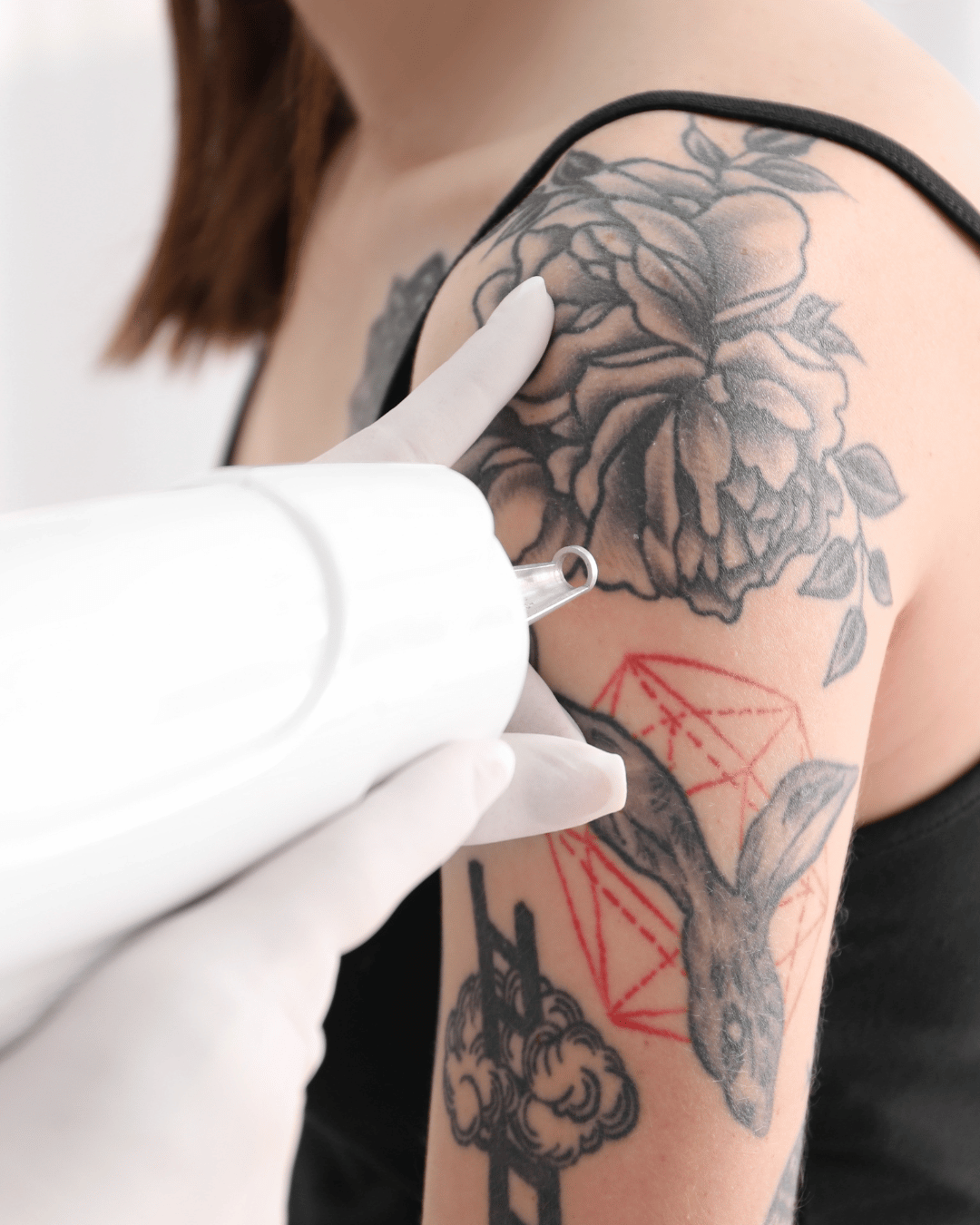
Whether it’s an outdated design, a name that no longer belongs, or a tattoo that simply doesn’t suit your current lifestyle, our Laser Tattoo Removal treatment offers a safe, advanced solution using the Picostar laser for faster clearance and reduced skin trauma.



Laser tattoo removal works by using targeted light energy to break down tattoo ink particles beneath the skin. Once shattered into smaller fragments, your body’s immune system gradually clears them away. Over a series of treatments, this results in visible fading and eventual removal of the tattoo.
At SRGN, we use Picostar Laser, an advanced picosecond laser system known for its power, speed, and precision. It treats a wide range of ink colours and skin types with reduced risk of scarring or pigment disruption.
Laser tattoo removal is a gradual process. Multiple sessions are needed, between 6 and 8, to allow your body time to clear the ink safely between treatments. The number of sessions depends on factors such as:
During your consultation, your practitioner will give you an estimate of how many sessions may be required. Treatments are typically spaced 8 weeks apart.

Our laser technology can treat a wide range of ink colours, including:
Each colour responds differently to laser energy, and our practitioner will assess your tattoo to determine the most appropriate treatment plan.
Laser tattoo removal can be safely performed on most areas of the body, including:
We do not treat tattoos in intimate areas or directly on the eyelids for safety reasons. During your consultation, we will assess your tattoo’s location and ensure treatment is appropriate.
In many cases, laser treatment can remove a tattoo entirely, especially if it’s a black ink tattoo. However, full removal depends on factors like ink depth, colour, and skin type. Some tattoos may fade completely, while others may leave a slight shadow or trace.
The cost of laser tattoo removal in the UK varies based on the tattoo’s size, colour, location, and the number of sessions required. During your consultation, our practitioner will provide a personalised treatment plan tailored to your tattoo and skin type.
Yes, some tattoos can be fully removed with laser treatment — particularly black or simple designs. However, coloured inks, older tattoos, or those placed deeply into the skin may require more sessions and may not disappear completely.
Laser tattoo removal is generally safe, but mild risks can include temporary redness, swelling, scabbing, or skin sensitivity. Rarely, there may be pigment changes or scarring if aftercare isn’t followed properly. Choosing an experienced practitioner significantly reduces these risks.
People with active skin infections, poor wound healing, certain skin conditions, or who are pregnant should avoid laser tattoo removal. A thorough consultation helps determine whether the treatment is suitable for you.
Tattoo removal can feel like a series of quick, hot snaps on the skin, similar to the sensation of having a rubber band flicked against the area. It’s tolerable for most people, and numbing options are available to reduce discomfort.
No — at-home tattoo removal methods are not safe or effective. DIY treatments can cause burns, scarring, and permanent skin damage. Laser removal performed by a qualified practitioner is the safest and most reliable option.
Areas with thinner skin or close to bone — such as the ribs, ankles, fingers, or spine — tend to be more sensitive during tattoo removal. However, the discomfort is usually short-lived and manageable.
It depends on your goal. If you’re planning a cover-up tattoo, fading the original ink may be all you need. If you want a clean slate, full removal is the better option. Your practitioner can help you decide based on your tattoo and future plans.